Adapting Servo Zoom Lenses for Smooth-Zooming DSLR Production, Part 1
DSLRs have become the standard by which current and future large-sensor camcorders are judged. But as we adopted DSLRs and primes to produce more "filmic" video for our clients, we left something critical behind: the feathery smooth servo zoom that serves feature film producers so well. So how do you get that capability on your DSLR?
But What About Smooth Zooms?
But these still photography lenses lack the ability to perform the smooth servo-motor controlled zoom--the "push" that camcorders have always provided with their built-in lens systems. Motion-picture camera lenses use external zoom controllers, much like external focus-pulling systems, to provide those feathery zooms. But those multi-thousand dollar zoom controllers are not really affordable, or applicable to DSLR lenses.
There is a solution. On-shoulder camcorder lenses that feature integrated, motorized (or "servo") motors to control the zoom can be used on DSLR cameras, with some caveats. These lenses, typically called ENG (electronic news gathering) or EFP (electronic field production) lenses have typically standardized on one lens/camera mount for the past few decades: the B4 mount. There have been, and are other mounts, but I will focus on the B4 mount for two reasons: the plethora of lenses available, and the standardization of both the mount and the lens attachment to the camera.
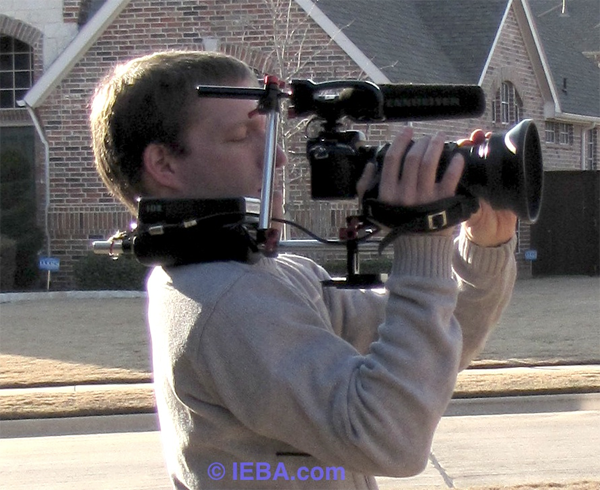
Getting the B4 lens powered and zooming on a shoulder rig
All B4s are Not Created Equal
The B4 mount describes a standardized three-flange, pinned, bayonet mount between the lens and camera. However, this mount is used on cameras and lenses built to serve 1/3", 1/2" and 2/3" sensors. Typically, you want a lens designed for the biggest sensor so you get the biggest circle of light on your sensor. You'll want a B4 lens designed to work on 2/3" cameras. This lens produces a larger "circle of light" or image area, than those designed for, say, the 1/3" camcorders.
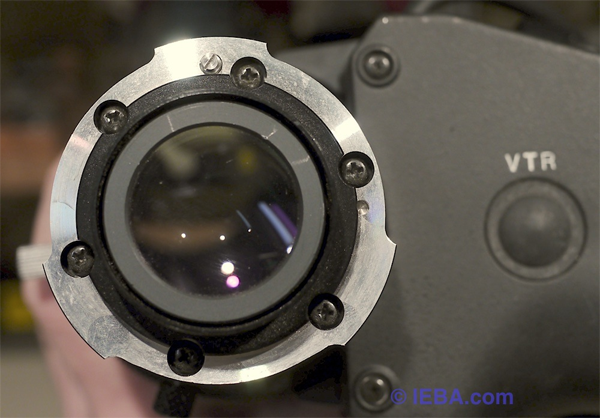
Mating this three-flange B4 mount to a DSLR is easy with the right adapter.
But given the hundreds of models from lens manufacturers like Canon, Fujinon, Nikon, Angineux, and more, how do you know what is what? Thankfully, the lens manufacturers clearly label their lenses with the critical information you need.
Take a Canon lens, for example:
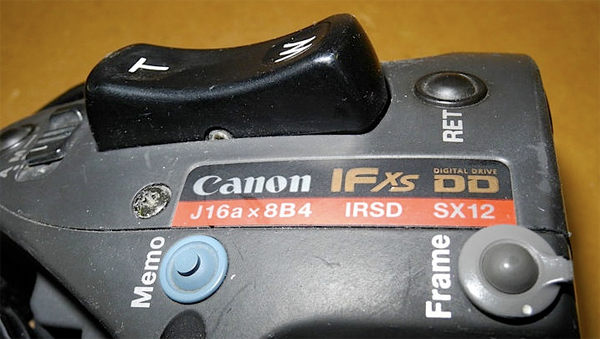
All professional lenses are clearly marked with a model number that indicates nearly all the technical aspects of this lens.
You can take the model number information from that lens (J16a x 8B4 IRSD) and see exactly what it means with Canon's handy chart, available online. In this case, the model number tells us that this lens is an ENG lens for 2/3" chips, it has a 16x zoom starting at 8mm. The mount is a B4. It has a built-in extender, manual focus, servo zoom, and "Digital Drive." You won't be making use of any of the "digital" features on the most recent broadcast lenses. These are specifically to communicate with broadcast camcorders made to use those features.
Here's Canon's chart:
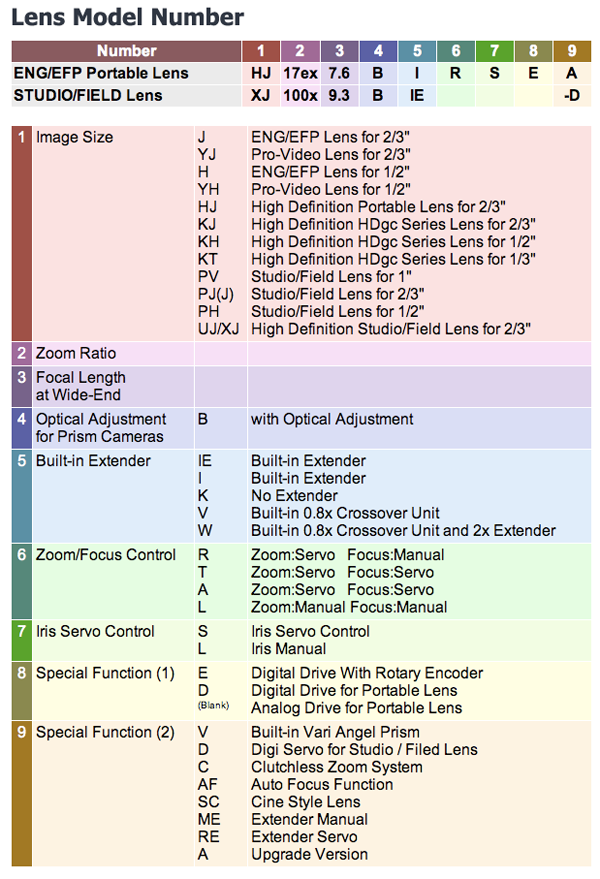
This chart explains the myriad of lenses from Canon.
Fujinon doesn't have a current generic chart, but rather a detailed breakdown on their website where you can page through and figure out what lens is what, based on the nomenclature on the lens. I did find an older chart that lacks details about their latest HD lenses. If you're looking for older, more affordable lenses, this chart will serve you quite well.
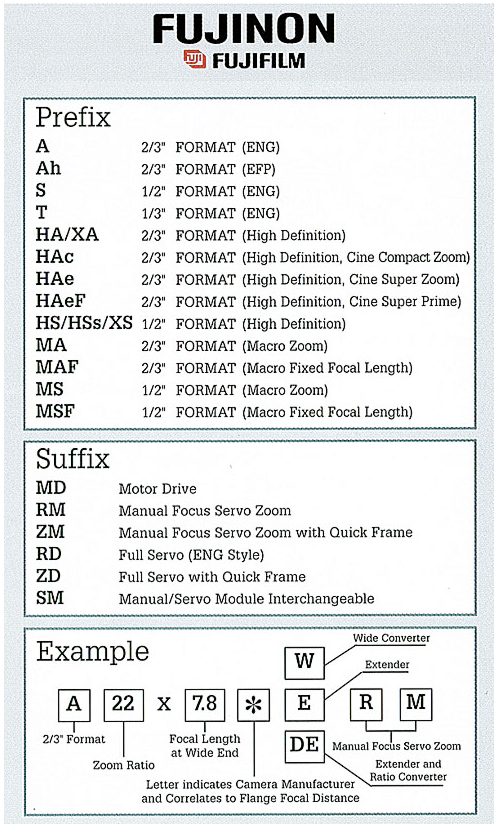
The older, but still very usable, Fujinon chart.
Related Articles
Adapting servo zoom ENG lenses to your DSLR rig with suitable rails and power makes for a smooth transition from prosumer camcorder to large-sensor video camera.